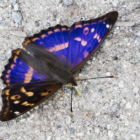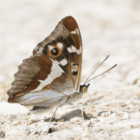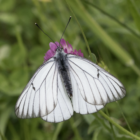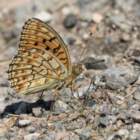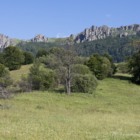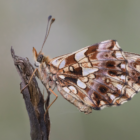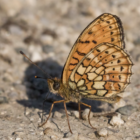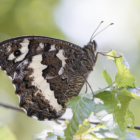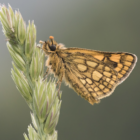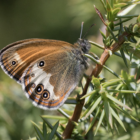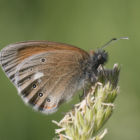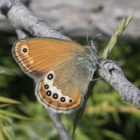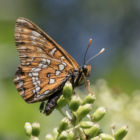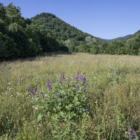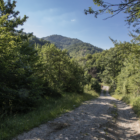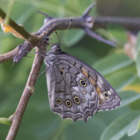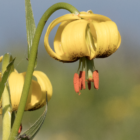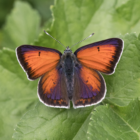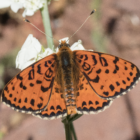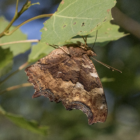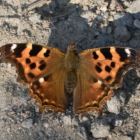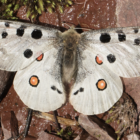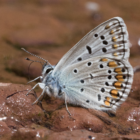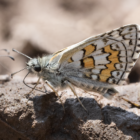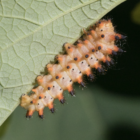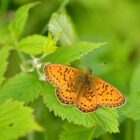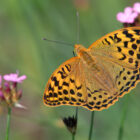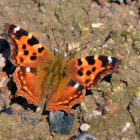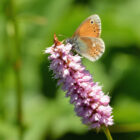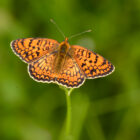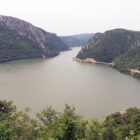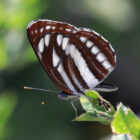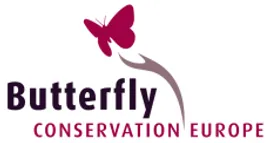Dates & Prices |
BOOK NOW |
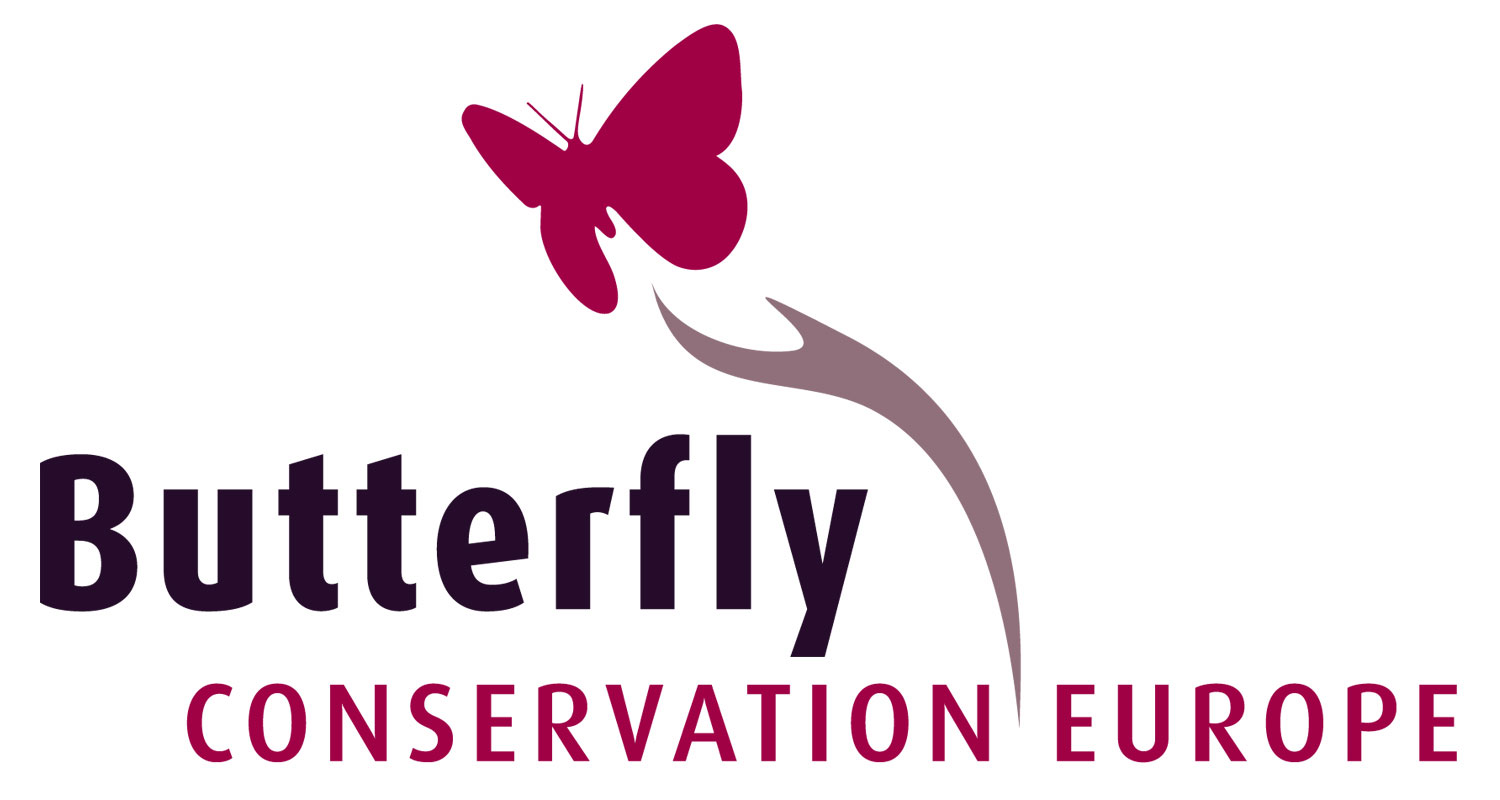 Dates: 14th – 22nd June 2026 Confirmed departure
Dates: 14th – 22nd June 2026 Confirmed departure
Price: £1,695 2 places
Single Room Supplement: £195
Deposit: £150 per person
Price Includes: Accommodation, all meals, ground transport, services of guides & tour report
Not Included: International travel, travel insurance, drinks & other personal items
Conservation Donation: Butterfly Conservation Europe
Leader(s): Lajos Nemeth & Adrian Hoskins
Group Size: Minimum 3 & maximum 6 guests + 2 leaders
Grade: Generally easy walking at a gentle pace
Holiday Highlights
- A unique 9 day tour designed to see an exciting range of butterflies in one of the least visited countries in Eastern Europe
- A massive 133 species recorded on our 2025 tour!
- Butterfly highlights include the rare False Comma, Apollo, Zephyr Blue, Cardinal, Southern Festoon, Freyer’s Purple Emperor, Balkan Copper, False Eros Blue, Lesser Lattice Brown, Hungarian and Common Glider, and many more!
- Genuine small group tour with 6 guests and 2 leaders, which means you get a high quality experience & sensitive habitats get protected
- This small group size will suit those into photography perfectly too
- Led by two of the best butterfly guides in Europe, with decades of experience leading similar tours in Europe & worldwide
- Plenty of great flora to enjoy
- Contribute to conservation with Butterfly Conservation
An exciting 9 day butterfly adventure in Serbia – searching for False Comma & other rarities, plus an excellent array of blues & fritillaries!
An exciting 9 day butterfly adventure in Serbia – searching for False Comma & other rarities, plus an excellent array of blues & fritillaries!
After the tremendously successful tour in summer 2025 where we saw well over 130 species, we are delighted to offer a fantastic opportunity to go butterflying in Serbia, to seek out a huge range of fantastic species – including False Comma!
Serbia’s nature is amongst the most intact in Europe with absolutely breathtaking scenery and many superb butterflies, including the much sought-after False Comma, False Eros Blue, and many others. Post-war Serbia is now an absolutely safe place, where the local people’s warmth welcomes tourists and nature enthusiasts from all over the world. This tour will guide you from unique sandy habitats to indigenous forests – some of Serbia’s most threatened natural areas.
Over 40 possible sites were visited before these were chosen and the itinerary is carefully planned to ensure trouble-free land travel and comfortable overnight accommodation, taking you at the same time to some of the best butterfly spots in the east, and central part of Serbia.
There are several more reasons why we believe this is the best butterfly tour you will find in Serbia:
- It is a 9 day trip, giving you more time in the field and a more relaxing holiday
- No more than 6 guests in the group mean viewing and photography opportunities will be maximised for everyone
- 2 expert guides with decades of tour leading experience and a vast bank of knowledge about butterflies and other wildlife. They can also give a lot more attention to each of our guests with such a small group size
Serbia is a land-locked country of 88.000 km2 and 7+million inhabitants, with a typical continental climate of warm summers and cold winters. The main geographical units in Serbia are the Pannonian region in the north, the peri-Pannonian region in the centre, and the mountain-and-basin region in the South. The northern province, Vojvodina is strikingly flat, while the central part we will visit is hilly and mountainous.
There are 12 Prime Butterfly habitats designated in the country with 57 of the total 207 native butterfly species considered to be threatened by the National Red Data book. Our tours’s main goal is to see and photograph the now extremely scarce False Comma, but we will have a chance to see other great butterflies, including False Eros Blue, Zephyr Blue, Lesser Lattice Brown, and many others.
Since Serbia is still considered to be a relatively unexplored country regarding butterflies, our data gathering will have a definite scientific value, with high possibility of finding new or interesting records for the country’s fauna.
This holiday promises to be popular again, so please book soon to avoid disappointment!
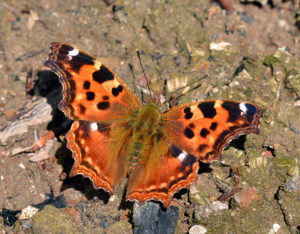
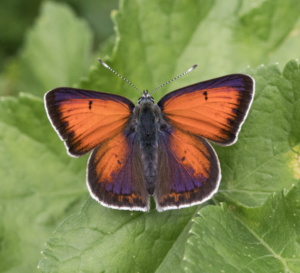
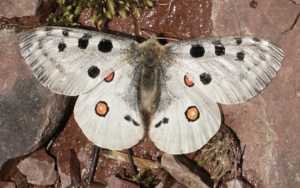
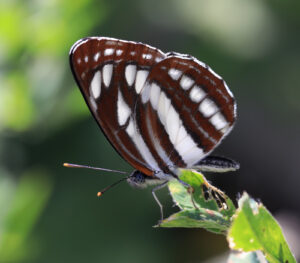
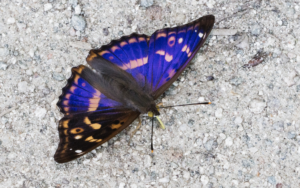
Day 1-2, Sun, Mon 14-15 June 2026 Deliblato Sands NP
Arrival at Belgrade Airport, from where a short drive of around 50km takes us to Deliblato Sands nature reserve, only 40km from the Romanian border. Mostly wooded by now (pine, birch and false acacia), the sands are still 35 km long and 11 km wide, a unique habitat, referred to as the “Pannonian or European Sahara”. Key species here include the endemic and rare local subspecies of Zephyr Blue, and the habitat in general is simply stunning.
We will explore the Deliblatsko Sands and at the nearby areas. Deliblato is a UNESCO World Heritage site originally formed in the ice age and covering some 35,000 hectares. It has a rich flora of some 900 species and is considered one of the most important centres of biodiversity in all of Europe. Birds include Imperial Eagle, Steppe Falcon and, nearer the Danube, Pygmy Cormorant. It is a prime butterfly area of Serbia with 88 species recorded. Aside from Zephyr Blues, Cardinals are often plentiful here and, if we are lucky, we may see some late Southern Festoons.
Overnight in Vrsac
Day 3-4, Tue, Wed 16-17 June Iron gates NP
After breakfast, we continue along slow roads towards the Djerdap Gorge National Park, internationally known as Iron Gates after its old Roman name Porta Ferea. The Park stretches along the right bank of the Danube River from the well-preserved 15th century 9-tower Golubac Castle to the Iron Gates Dam near the town of Kladovo. The Danube represents the border between Serbia and Romania and the two countries share responsibility for this huge, protected area. The gorge cuts through the Carpathian Mountains for over 100 kms with cliffs rising to 300m in places.
We will have a full day butterflying along the dirt roads through the dense deciduous forests of the National Park which extends to 64,000 hectares. Habitats here include a large lake, exposed limestone cliffs and broad-leaved deciduous woods. We will be looking for Freyer’s Purple Emperor, Camberwell Beauty, Lattice Brown, Lesser Lattice Brown, Tufted Marbled Skipper, Orbed Red-underwing Skipper, Eastern Festoon, Hairstreaks, Turquoise Blue, Amandas Blue, Russian Heath and Balkan Marbled White in the area. This is a great area to watch out for Golden and Short-toed Eagles. Black Stork Rock Partridge are amongst some of the specialist birds and 104 species of butterfly have been recorded. The scenery is spectacular and the whole area has been classed by UNESCO as a biosphere reserve. Possible Chamois sighting!
Overnight in Donji Milanovic
Day 5-8, Thur, Fri, Sat 18-21 June Stara Planina NP
This morning, we visit Mt Stoll, exploring the open grassland and scrub habitats. In the afternoon we continue to the world-famous butterfly haven of Stara Planina, where our hotel is surrounded by butterfly-filled flower meadows. This is the most mountainous region of Serbia which is close to the Bulgaria border and 116 species of butterfly have been recorded here, together with 200+ species of birds and some 30 mammals.
Three full day’s butterflying in different and remote parts of Stara Planina, looking for the famous False Comma, also False Eros Blue and Lesser Lattice Brown. Other target species include Balkan White, Northern Wall Brown, Russian Heath, Eastern Large Heath, Bulgarian-, Almond-eyed and Bright-eyed Ringlets, Geranium and Mountain Argus, Amandas Blue, Balkan Copper, Hungarian and Common Glider, Emperors, Freyer’s and Bog Fritillary.
Overnight Stara Planina Resort
Day 8, Sun, 22 June
Morning at Stara Planina, then drive back to Belgrade (4.5 hrs non-stop). Fly out tonight, or overnight and fly out on 23rd
Mallow Skipper
Marbled Skipper
Tufted Marbled Skipper
Orbed Red Under Skipper
Safflower Skipper
Yellow-banded Skipper
Grizzled Skipper
Large Chequered Skipper
Chequered Skipper
Essex Skipper
Small Skipper
Lulworth Skipper
Large Skipper
Southern Festoon
Eastern Festoon
Apollo
Common Swallowtail
Scarce Swallowtail
Wood White
Orange Tip
Black-veined White
Large White
Green-veined White
Small White
Southern Small White
Balkan G-v White
Eastern Bath White
Clouded Yellow
Berger’s Clouded Yellow
Brimstone
Small Copper
Sooty Copper
Large Copper
Scarce Copper
Purple Shot Copper
Lesser Fiery Copper
Balkan Copper
Purple Hairstreak
Green Hairstreak
Blue-spot Hairstreak
White-letter Hairstreak
Ilex Hairstreak
Sloe Hairstreak
Long-tailed Blue
Small Blue
Short-tailed Blue
Holly Blue
Eastern Baton Blue
Chequered Blue
Green-underside Blue
Large Blue
Alcon Blue
Balkan Zephyr Blue
Silver-studded Blue
Idas Blue
Reverdin’s Blue
Blue Argus
Brown Argus
Mazarine Blue
Amanda’s Blue
Turquoise Blue
Chapman’s Blue
Common Blue
False Eros Blue
Meleager’s Blue
Anomalous Blue
Silver-washed Fritillary
Cardinal
Dark Green Fritillary
High Brown Fritillary
Niobe Fritillary
Queen of Spain
Lesser Marbled Fritillary
Marbled Fritillary
Twin-spot Fritillary
Bog Fritillary
Pearl-bordered Fritillary
Weaver’s Fritillary
Knapweed Fritillary
Glanville Fritillary
Lesser Spotted Fritillary
Spotted Fritillary
False Heath Fritillary
Heath Fritillary
Nickerl’s Fritillary
Freyer’s Fritillary
Red Admiral
Painted Lady
Peacock
Small Tortoiseshell
Comma
Large Tortoiseshell
False Comma
Camberwell Beauty
Map
White Admiral
Southern White Admiral
Poplar Admiral
Purple Emperor
Lesser Purple Emperor
Freyer’s Purple Emperor
Common Glider
Hungarian Glider
Speckled Wood
Large Wall Brown
Northern Wall Brown
Wall Brown
Lattice Brown
Lesser Lattice Brown
Ringlet
Meadow Brown
Small Heath
Chestnut Heath
Pearly Heath
Russian Heath
Eastern Large Heath
Large Ringlet
Woodland Ringlet
Bright-eyed Ringlet
Almond-eyed Ringlet
Bulgarian Ringlet
Marbled White
Balkan Marbled White
Great Sooty Satyr
Great Banded Grayling
Eastern Rock Grayling
The 2025 trip report will be published here soon


